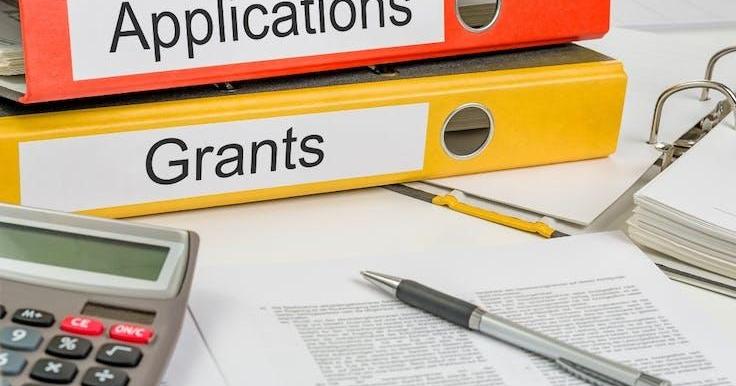Writing grant proposals is challenging and competitive, but it’s also a gratifying process necessary to further your research and career. How can you ensure reviewers and assessors notice your proposal and make a lasting impression? Here are some pointers and techniques for reviewing and evaluating grant applications like a pro.
What is a grant?
Simply put, a grant is money sponsored by the government or an organisation that is given freely, without conditions, to fund a specific project. Getting grants is not simple. Severe effort is needed even in the grant-securing process. To satisfy the grant’s objectives, you must thoroughly understand the financing opportunity, its requirements, and the capabilities, organisational structure, and resources of your company. Writing grant applications or proposals can take up to 20 hours, and funds are given to those who can meet grantor criteria rather than those who need them.
Getting a grant is difficult. For instance, in the UK, the likelihood of receiving financing ranges from 10% to 35%. Furthermore, grants frequently only cover a percentage of the total costs required for a project. You must adhere to stringent accounting guidelines for all project expenses and satisfy specific performance requirements throughout the funding term. Specific programme objectives must be created, authorised, and implemented following the grant application guidelines. Finally, in inappropriate use or theft of public funds, penalties ranging from economic fines to prison may be imposed on the grant recipient for failure to fulfil the terms of the award!
-
Understand the requirements
Understanding the standards by which your proposal will be evaluated is the first step towards mastering the assessment and evaluation of grant applications. Before you write a grant proposal, familiarise yourself with the rules and expectations of various funding organisations and programmes for grant applications. Take time to read and adhere to the guidelines properly. Determine your project’s main aims, results, and impacts and ensure they align with the funder’s priorities and objectives. To illustrate how your project satisfies the requirements and takes on the demands and difficulties of the field, use precise and unambiguous language.
-
Write briefly and plainly.
Writing clearly and succinctly is the second stage to mastering the assessment and evaluation of grant applications. You must make it simple for reviewers and assessors to comprehend and value your project because they have limited time and attention to study and evaluate your proposal. Create clear, concise language; avoid acronyms and jargon; and divide your plan into sections that make sense. Utilise visual aids like tables, figures, bullet points, subheadings, and headings to accentuate your essential points and bolster your claims. Edit and proofread your proposal several times to make sure that there are no mistakes or repetitions.
Putting your knowledge and reputation on display is the third stage to a flawless grant application review and evaluation. Reviewers and assessors want to be sure you have the know-how, expertise, and experience necessary to complete your project effectively. Give proof of your credentials, accomplishments in the past, awards, publications, partnerships, and collaborations. Describe how your project expands on your prior work and helps to progress science and practice. Show your budget, project’s strategy, schedule, and approach are workable and reasonable. Discuss any possible hazards, restrictions, or moral dilemmas that could come up while working on your project, along with how you plan to handle them.
-
Involve your stakeholders and audience.
Involving your audience and stakeholders is the fourth stage of a flawless grant proposal review and evaluation. In addition to being authorities in your profession, reviewers and evaluators also serve as delegates for the funding organisation, the general public, and the project’s beneficiaries. You must appeal to their needs, values, and areas of interest while presenting your proposal. Use a convincing and persuasive tone to communicate the significance, originality, and relevance of your project. Describe how your initiative will close a gap, resolve an issue, or open up a new opportunity for the industry. Describe how your proposal will benefit the environment, economy, society, or policy.
-
Seek suggestions and counsel.
Asking for comments and guidance is the fifth step to efficiently reviewing and evaluating grant applications. Writing a grant proposal is a collaborative effort that requires input from various sources rather than an isolated undertaking. The opinions, advice, and criticism of peers, mentors, coworkers, or outside specialists who can evaluate your plan and provide helpful criticism can be constructive. You can consult programme officers, the funding agency, or previous grantees to align your submission with the funder’s needs and preferences. Before submitting your idea, you may make necessary revisions and improvements using the comments and guidance.
-
Continue and take note of the results.
To become an expert in reviewing and evaluating grant applications, the sixth step is to follow up and take notes on the results. Following submitting your proposal, you should monitor the application’s status and advancement and reply to any questions or requests that the funding agency or the reviewers may have. Additionally, you should be ready to accept the result and draw lessons from it, whether favourable or unfavourable. You should thank the reviewers and the funder if your application is approved. Along with adhering to the reporting and dissemination guidelines, you should also have a cordial rapport with the funder. You shouldn’t quit or become demoralised if your plan is turned down. You shouldn’t quit or become demoralised if your plan is turned down. Requesting and reviewing the reviewers’ and assessors’ opinions and suggestions will help you enhance your application, which you should resubmit to a different programme or funding.
Conclusion
With the help of your grant proposal, you may make your ideas a reality. Use this checklist in conjunction with the proposal that you want to submit. Use it to confirm that all relevant factors have been considered, that the proposal has all the required information and that all requirements have been met. Writing a grant proposal might seem like a daunting task. Stacking the deck in your favour is crucial because of the volume of data you must gather, the number of requirements you must fulfil, and the stakes involved in the proposal’s success.





